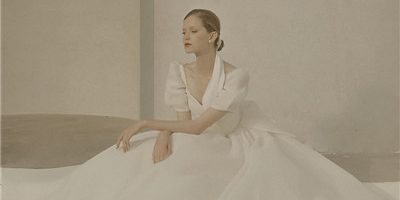wedding dress fabric
The fabrics for making wedding dresses include satin, thick forging, bright forging, lace, crystal yarn, organza, mesh yarn, etc. The same kind of fabrics are imported and domestically produced, and imported from Europe and Japan and South Korea. The different materials also determine the different grades and prices of wedding dresses.
For the wedding dress of the yarn series, the concept of “layer” is often very important. When purchasing yarn series, it is recommended not to choose products with less than four layers of yarn if economic capacity allows. Because the number of layers is too small, the wedding dress will look shriveled and listless, not firm and fluffy enough, and it will not reflect the lightness, romance and fantasy of the gauze fabric at all.
If it is a satin series product, generally a layer of imported thick forging and a layer of lining can achieve good results. If coupled with better skirt support, it will be more perfect and beautiful.
Overly complicated production techniques and decorations are often superfluous, drawing the viewer’s attention to the details of the wedding dress and ignoring the beauty of the hostess of the wedding dress. Especially those wedding dresses whose entire skirts are covered with large flowers make the eyes do not know where to go. Therefore, European and American wedding dresses advocate simple and generous styles. Of course, proper beading, lace, bows, and ribbons are also essential finishing touches for wedding dresses. It’s like the advertising slogan of a certain brand of clothing: simple but not simple.
If you want your wedding dress to be a family heirloom, then you’d better choose silk, this luxurious fabric is elegant and comfortable to wear. It is important to remember, however, that wearing silk does not achieve a pure white effect, as silk always has a slightly creamy appearance.
If you want the fabric you choose to be affordable, durable and not easy to wrinkle, then you can consider choosing polyester fiber fabrics, which are generally glossy and relatively cheap, but are more prone to wrinkling.







